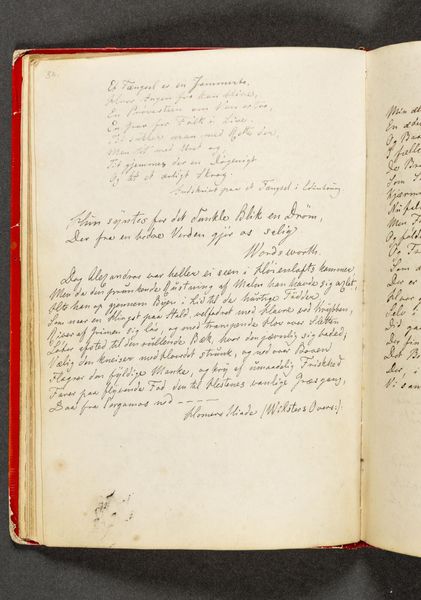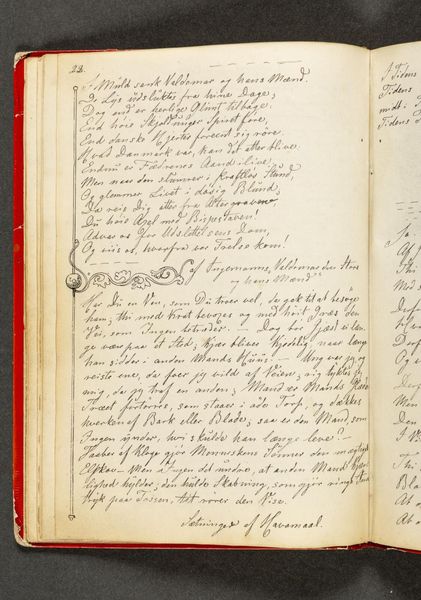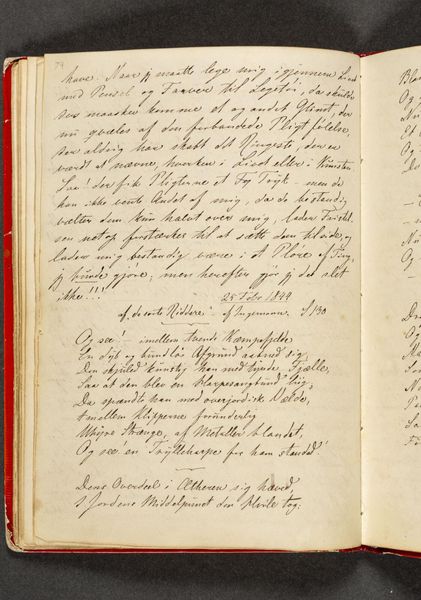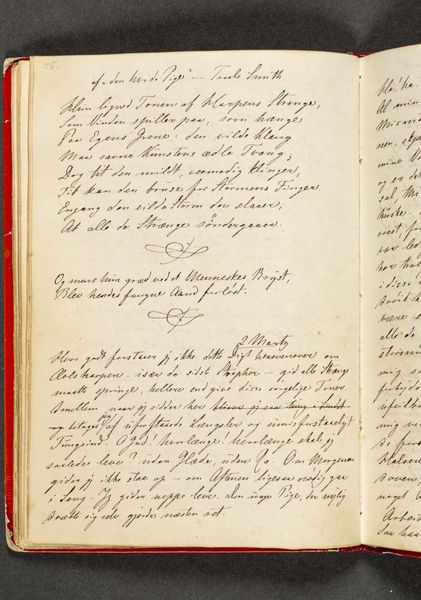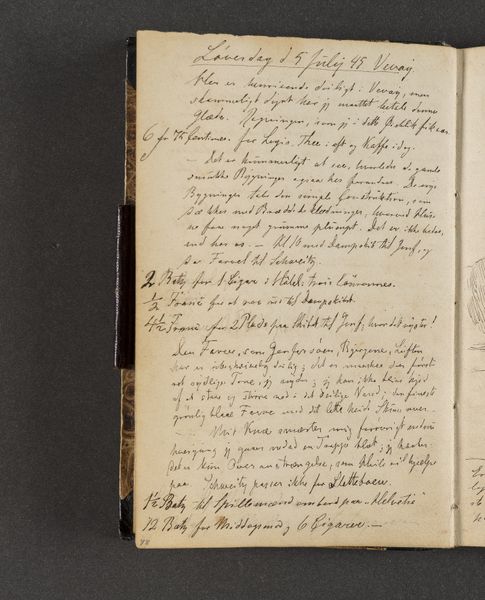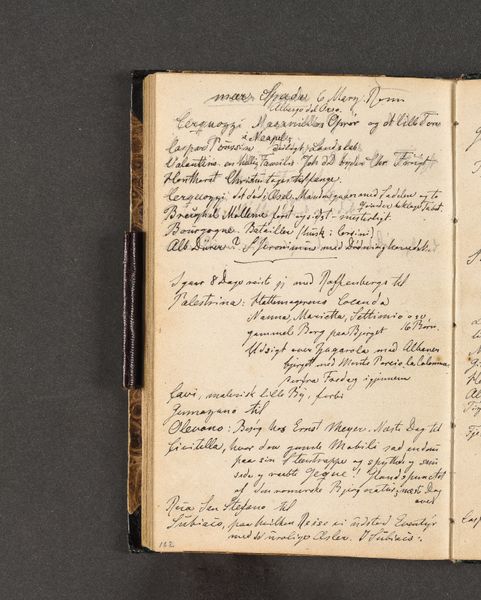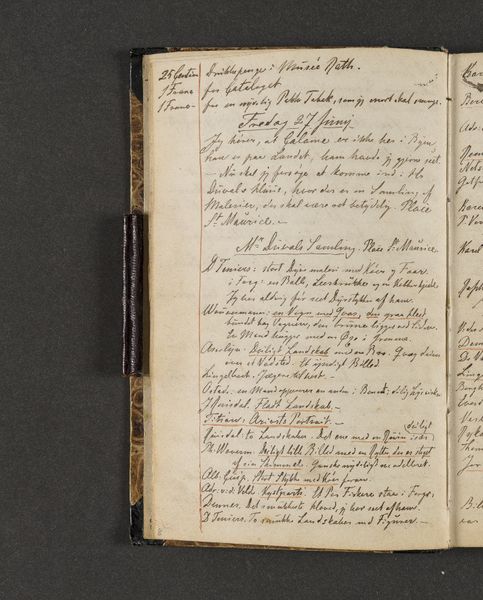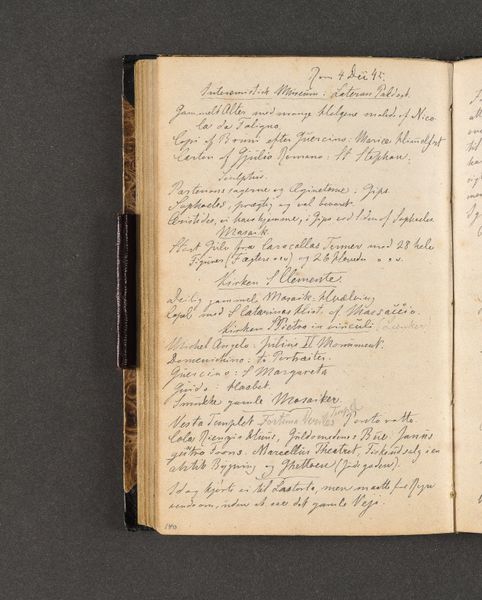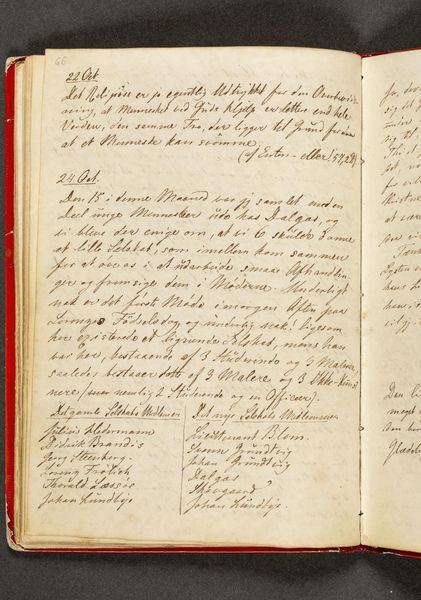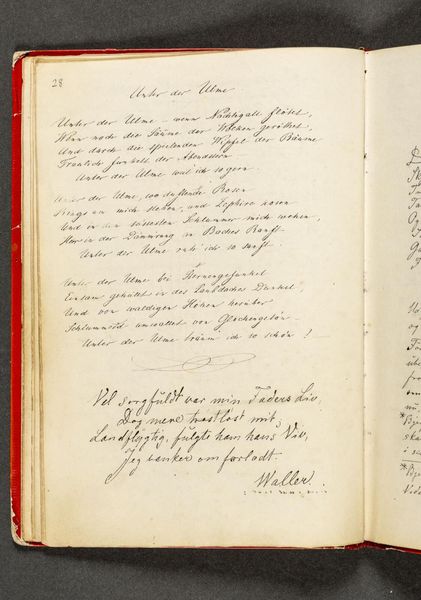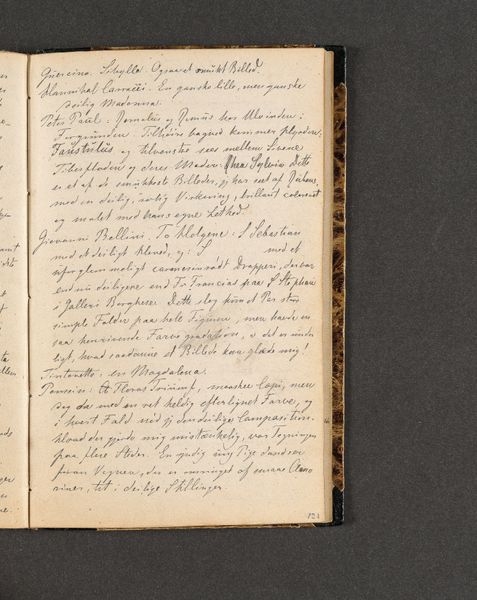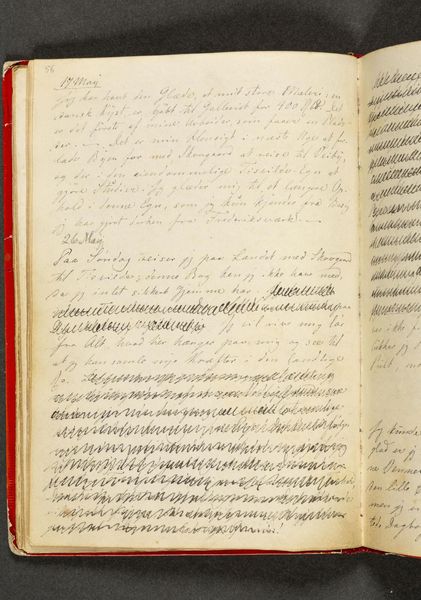
drawing, paper, ink
#
drawing
#
sketch book
#
paper
#
ink
#
romanticism
Dimensions: 192 mm (height) x 133 mm (width) (bladmaal)
Curator: Here we have “Høstsang. Dagbog. Side 58” a page from a sketchbook by Johan Thomas Lundbye, created in 1843. The media he chose was ink on paper. Editor: It feels like a very personal document. Intimate, almost, because you can feel the presence of the artist and their hand in creating the text and image on the page. There's an ethereal, melancholy air to it, something fleeting captured for a moment. Curator: Absolutely. Lundbye was a key figure in Danish Romanticism, and this diary entry, "Autumn Song," reveals so much about the cultural context of that period. Remember, Romanticism celebrated the power of nature, intense emotion, and the individual experience. This page isn’t just a record, it’s a reflection of Lundbye’s inner world and feelings on the transience of life. Editor: Yes, that sense of the individual struggling to grasp at some deeper truth permeates this piece. Even though it's text, there's a strong visual element in the handwriting itself. It’s expressive and suggests movement. The writing almost flows and rises from the page as if carrying sound. What’s interesting is the concept of cultural continuity as revealed through these visual symbols. In its very intimacy and subjective perspective, the work engages social forces, politics and production—as his work reflected his experience and the cultural mindset. Curator: And it's not just any writing—it's poetry, filled with religious allegories and imagery. The cultural memory ingrained in its symbolic and spiritual language certainly is deeply present. You feel like the cultural moment becomes available as visual artifact, in combination with Lundbye’s particular aesthetic perspective. The interplay of language and form is also critical to considering the politics of the imagery presented. Editor: Looking at this now, it makes me reflect on how diaries serve not just to record but to actively shape memory. They’re artifacts with so much meaning, in relation to both past and present, reflecting the cultural construction of identity. Curator: A poignant reflection indeed, leaving us to consider how the fleeting autumn songs of the past can still echo with such clarity.
Comments
No comments
Be the first to comment and join the conversation on the ultimate creative platform.
